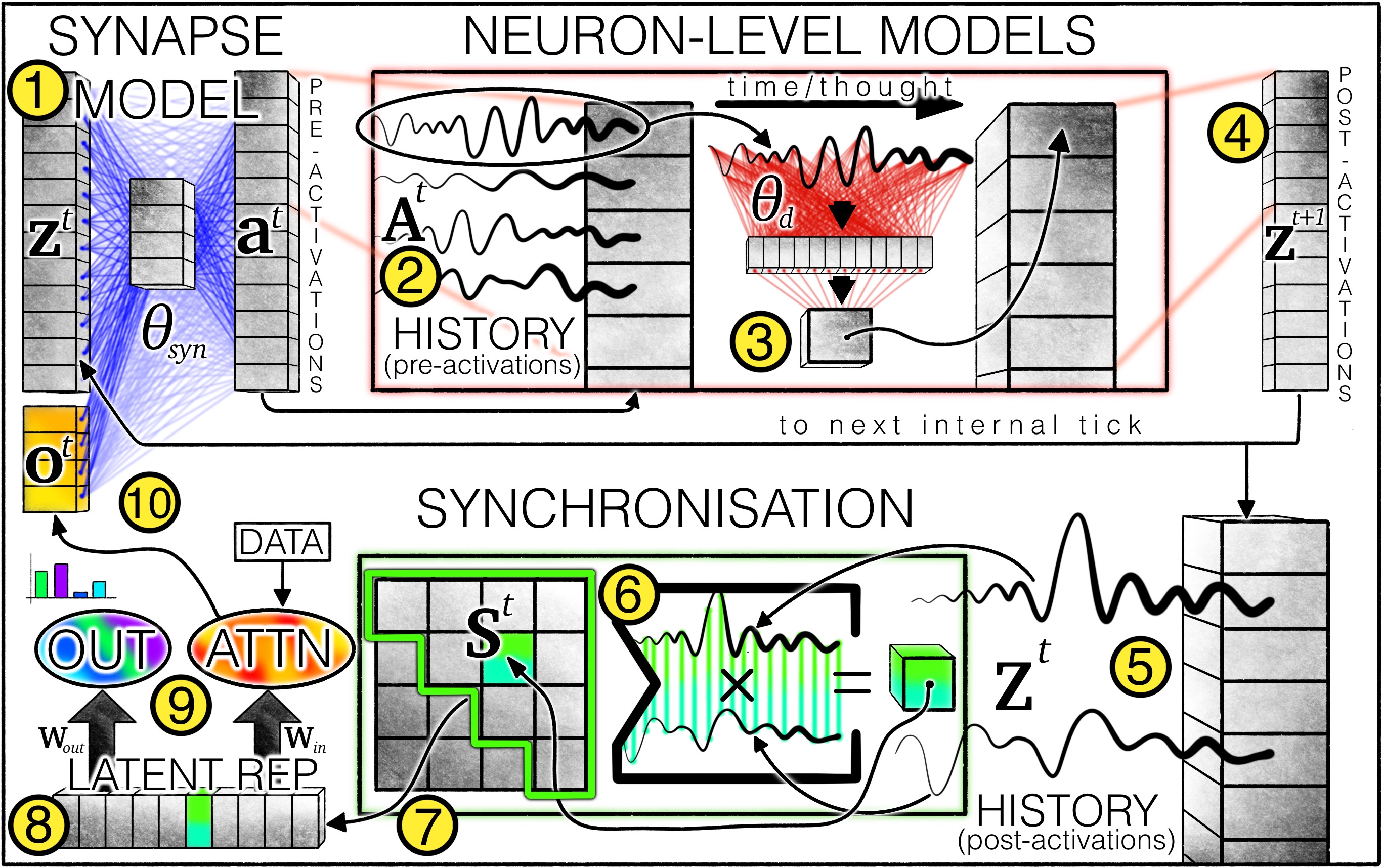
CTM vs GPT: A New Chapter in AI and What It Means for the Future of Enterprise SaaS
2025-06-18
In recent years, Generative Pre-trained Transformers (GPT) have been the cornerstone of AI advancements. From writing assistance to chatbots and code generation, GPT-based models like OpenAI’s ChatGPT and Anthropic’s Claude have proven to be powerful general-purpose tools. But a new contender has emerged that could redefine the landscape: CTM (Composable Thought Model) by Sakana AI.
So, what is CTM, and is it better than GPT? More importantly, how will this evolution impact the AI industry—especially for enterprise SaaS companies?
Let’s explore.
What is CTM?
CTM, or Composable Thought Model, is an innovative approach to building large language models introduced by Sakana AI. Rather than being a single, monolithic model trained end-to-end, CTM breaks intelligence down into modular and specialized expert agents, each responsible for specific tasks. These agents dynamically collaborate in real-time to solve complex problems—like an AI "brainstorming" session.
Unlike GPT, which tries to do everything within a single model's parameters, CTM’s architecture mimics biological evolution and swarm intelligence. The result is a highly flexible, efficient, and scalable system for reasoning, planning, and decision-making.
Key Differences Between CTM and GPT
🧠 GPT (e.g., GPT-4):
- Uses a monolithic transformer architecture
- Trained end-to-end on large-scale datasets
- Designed for generalized capabilities across diverse tasks
- Less adaptable for real-time modular changes
- Typically high compute cost due to size and complexity
🔧 CTM (Composable Thought Model):
- Built from modular expert agents that collaborate in real time
- Uses evolutionary, task-specific training inspired by biological systems
- Focuses on collaborative problem solving and dynamic reasoning
- Highly adaptable via agent selection and recomposition
- Lower overhead and more efficient by activating only relevant modules
In Sakana’s own words, CTM was inspired by “evolution and collaboration in nature”—imagine AI models that evolve like species and work together like an ant colony or a group of musicians.
Read more from the official source here:
👉 CTM by Sakana AI
Is CTM Better Than GPT?
It depends on the use case.
- For generalized tasks (e.g., writing essays, broad Q&A), GPT is still highly effective.
- For modular, scalable, and explainable AI applications, CTM may be the better fit.
Think of GPT as a Swiss Army knife: versatile, but not always optimal. CTM is like a custom-built toolkit—each part honed for a specific purpose.
Strategic Implications for the AI Industry
- A Shift Toward Modular AI
As enterprise needs grow more complex, modularity will matter more than brute force. CTM's design philosophy supports future-proofed systems that evolve with the business. - More Democratization
Because CTM allows models to be trained and combined more flexibly, smaller AI teams could build powerful systems without OpenAI-sized compute budgets. - Accelerated Enterprise Adoption
Modular, explainable, and efficient—CTM checks the boxes that CIOs and CTOs care about. We may soon see CTM-like frameworks powering everything from HR tech to customer support automation.
Final Thoughts
CTM is not just a new model architecture—it’s a new way of thinking about intelligence. For enterprise SaaS companies that value modularity, explainability, and cost-effectiveness, it represents a compelling path forward.
GPT brought us into the age of AI.
CTM might just usher in the age of collaborative intelligence.
Stay ahead of the curve. Subscribe to the BlendVision newsletter for more insights into next-gen AI, media technology, and SaaS innovation.
LET'S TALK!
Interested in a demo, free trial, or pricing? Fill out the form, and one of our consultants will get in touch to assist you.
Related Articles

The Future of Video: 8 AI Features Transforming Streaming and Media in 2025
In 2025, artificial intelligence is no longer a futuristic concept, it's an operational backbone driving innovation in the media and video streaming industries.

How to Build an Effective Employee Training and Development Program
Discover the purpose, importance, and strategy of corporate training—and how AI platforms like BlendVision AiM can optimize employee development.

How to Assess AI Translation Quality: A Guide for Enterprise Content Teams
Learn how to evaluate AI translation quality using automated metrics and human-in-the-loop strategies. A must-read for enterprise teams managing multilingual content at scale.

